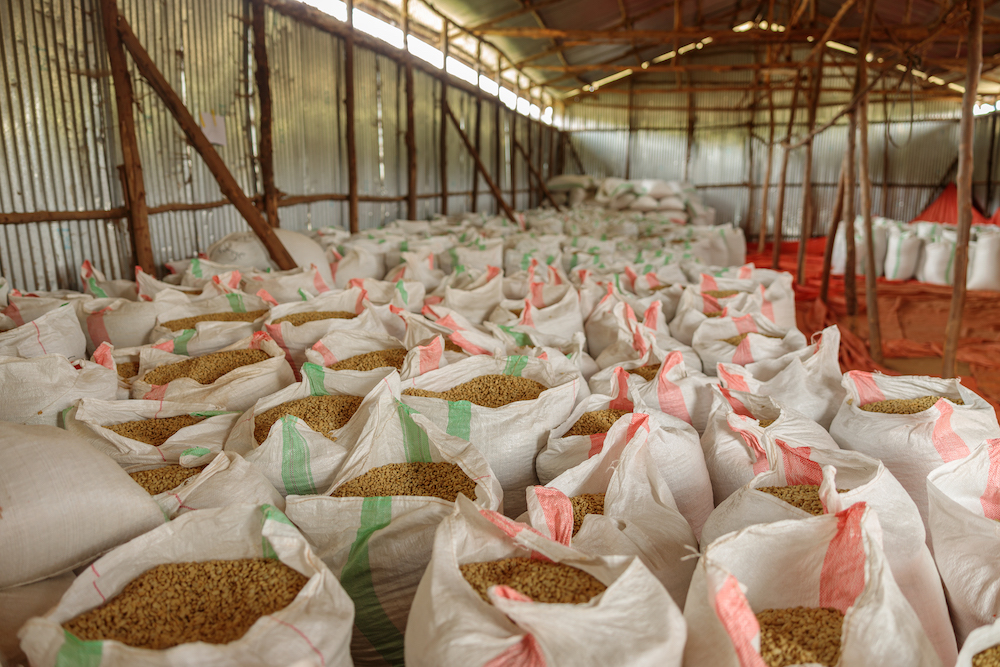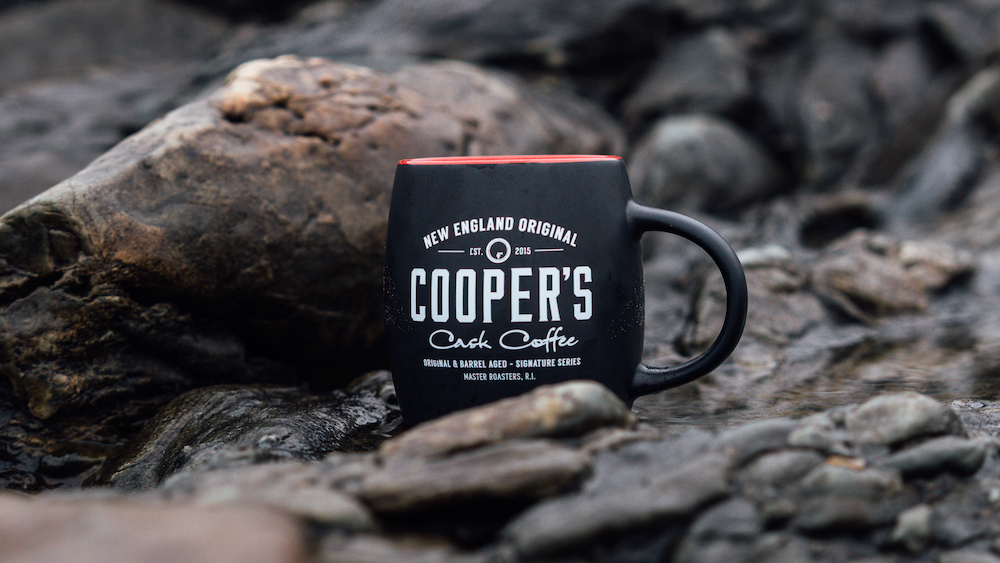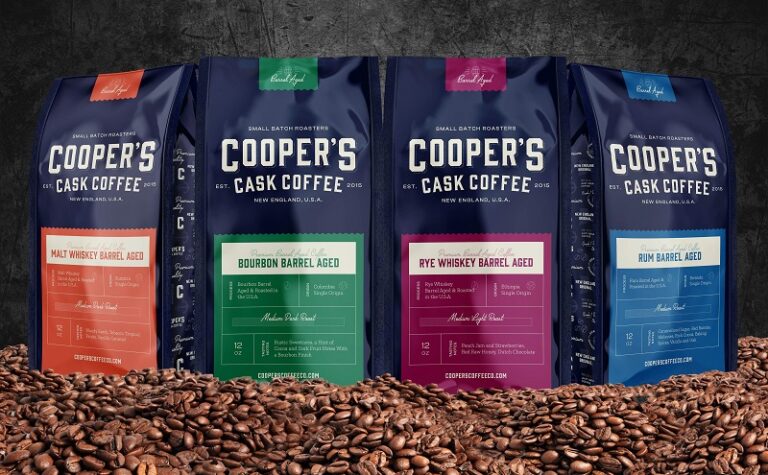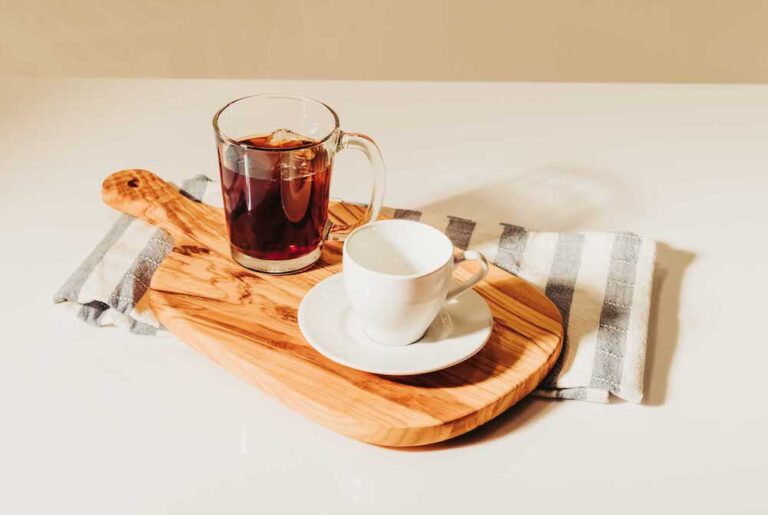Coffee is America’s most popular beverage. We consume over 491 million cups of coffee every day. But do we all consume great coffee?
At Cooper’s Cask Coffee, every version of our coffees is made using single-origin coffees. This guarantees you get the real flavors of the coffee, as they should be, from the region where the coffee was grown. No blends, no aggregations, no loss of original taste.
Our beginner’s guide to single-origin coffees will walk you through the what, how, and why of this prime product. You may start as a beginner, but by the end you’ll understand what coffee purists understand: the meaning of “single origin” coffee, the meticulous processing it undergoes, and the reasons behind its growing appeal over blended coffee.
Read on so that you can curate coffee choices with confidence, for the best experience in your cup.
What are “single-origin” coffees?
Single-origin coffees (or just “single origin”) are single-origin if the coffee beans were grown in a single geographic region. These single-origin coffees may come from a single farm, from multiple farms in the same region, or as a blend of the coffees grown from that country.
At Cooper’s Cask Coffees, our single-origin coffees come from either a single farm or a small group of farms located near each other in the same region. We don’t blend coffees from across a country.
Instead, we make sure the farms that supply our coffee deliver the unique flavor qualities associated with region’s climate, altitude, plant cultivar, and soil composition
Terminology
There are other terms you’ll need to be familiar with as you go from coffee beginner to coffee connoisseur.
- Single Source. Comes from a single farm in a single region (aka single farm/single estate)
- Varietal. Specific type of plants growing on a farm.
- Terroir. The flavor given to the beans by their growing environment.
- Microlot. Coffee sourced from a single plot/field on a single farm.
From Soil to Cup: A Single-Origin Coffee Journey
Single-origin coffees don’t just land in your coffee filter. They have several steps they must take before reaching the peak flavor you’ve come to love. That journey starts at the farm, with quality checks from day one until the brew is done.
Growing Single-Origin Coffees
The journey of single-origin coffee begins with careful cultivation. Coffee plants thrive in tropical regions, especially within the “Bean Belt” located between the Tropics of Cancer and Capricorn. Arabica and Robusta are the two primary species grown, with Arabica being the more esteemed one, known for its nuanced flavors and higher quality.
Choosing the Coffee Fruit
Coffee beans are actually the seeds of the coffee species growing on that farm. These seeds come from small fruit—coffee berries—that grow on the coffee shrub.
Don’t let the word “shrub” fool you. These coffee plants can grow to be 20 feet tall, which makes them seem like a tree even though they aren’t.
When a coffee shrub is planted, it takes 3 to 4 years before the plant begins to bear our favorite fruit. Harvesting occurs once per year for most crops. In some regions in Colombia, the varietal produces two flowerings per year, providing two harvests.
Harvesting the Coffee Fruit
Harvesting is a labor-intensive process that demands precision. The choice of harvesting method impacts the coffee’s taste.
Harvesting on Smaller Farms
In some regions, coffee farmers harvest the berries by hand, mostly due to the topography of the growing location. The hand-picked cherries are gathered at their peak ripeness, providing higher-quality results.
These farms choose hand-picking because most coffee is grown at higher altitudes. These plots, located on slopes, don’t lend themselves well to machine-operated harvesters. Also, machine operated picking systems can be cost-prohibitive for these smaller farms.
Harvesting on Larger Farms
On very large farms, where the land is often mostly flat, the owners may use machines to harvest their coffee cherries. This is more of a corporate coffee operation, where all the berries on branches are strip-picked. This means berries at multiple stages of ripeness are harvested, usually to create blends that use less-than-best beans mixed with the ripe beans.
Processing: Getting Down to the Beans
Because the beans are seeds, they’re located in the center of the coffee fruit, called a “cherry.” These seeds usually grow in pairs, with the flat sides “back to back.” A few varietals only grow a single seed, called a “teaberry.”
The coffee fruit is edible, and according to legend, it’s what first drew a herd of goats to it. The goat herder saw them eat the berries then stay up all evening in an agitated state.
He reported this to a monastery, and the monks found the bush. They took the berries, created a drink from them, and then were able to stay up while they did their long series of prayers and rituals.
About 300 plus years later, someone got the great idea to remove the beans, roast them, then boil them in water. Welcome to the modern style of “coffee.”
Modern farms have at least 3 techniques to remove the fruit so that the beans can be dried, shipped, roasted, ground, and enjoyed through your favorite brewing method.
Cleaning the Bean: The Wet Method
This method, also called the washed process, starts by loading the coffee cherries into a pulping machine. This machine removes the fruit pulp and outer skin from the seeds. What comes out are the seeds with a thin layer of cellulose on them, called “parchment.”
The machine separates the wet beans by weight and size, eventually dispensing them into fermentation tanks filled with water. The beans remain here from 12 hours to 4 days. A slick layer clinging to the parchment—called mucilage—dissolves away, and then the farm rinses the beans and prepares them to dry.
Cleaning the Bean: The Dry Method
This method dries coffee cherries the same way they’ve been done for centuries.
On smaller farms and more arid locations, the dry method involves laying the freshly picked cherries out on large surfaces to dry out under the sun.
To keep the fruit from going rancid and impacting the flavor of the beans, a farm worker rakes and turns the beans throughout the day. At night, the farmers cover the beans to keep fog and dew off of the beans. The dry method can take weeks to complete.
Cleaning the Bean: The Honey Process
This cleaning method falls between the wet and dry methods. Some of the fruit is removed, leaving a sticky layer of mucilage around the beans. The de-pulper controls how much of that gooey stuff is left on the seed.
These pulpy beans are sent to the fermentation tanks for 1 to 3 days. Once done there, they go on to natural sun-drying with that mucilage still intact. Dry milling removes the dried mucilage, and the beans are ready.
When ground, these honey-processed beans deliver a sweeter flavor profile with an almost honey-like taste.
Drying the Beans
Cooper’s Cask Coffee single-origin beans come from either the wet or dry method.
- For the wet method, the cleaned beans must be either laid out in the sun to dry or machine-dried.
- The dry method dries the fruit and the beans.
The beans are ready when they achieve 11% moisture content.

The Final Steps Before Export
We’re almost there! The whole single-origin coffee beans need some final processing, called “milling,” before they’re shipped off to Cooper’s Cask Coffee for roasting.
Hulling the Beans
These whole coffee beans head to a special hulling machine that does 1 of 2 things:
- For wet processed coffee beans, the hulling machine removes the parchment layer.
- For dry processed coffee beans, the hulling machine removes the outer skin, the dried fruit, and the parchment layer.
Sorting Coffee Beans
Following the coffee’s processing, a true quality coffee exporter sorts the beans by size, shape, and density to ensure a uniform and consistent final product.
This is why you have to be careful with “blended” coffees. A blend might include beans that go from under ripe to overripe, and anywhere in between. It might also blend coffees from several regions in a country, thus making the coffee not truly “single origin,” though it did come from a single country.
This type of blending is usually done to boost the lacking flavor profile of subpar beans with those of decent beans. It’s most common with big brand coffees and large corporate roasters. As coffee purists, we prefer all the beans to be the best so that no flavors have to be hidden.
In Terroir Territory
Single origin coffee preserves the unique attributes of the coffee beans grown in a specific location. This meticulous segregation of beans captures the essence of its “terroir”—the interaction between soil, climate, altitude, and cultivation practices that influences the coffee’s flavor profile.
Understanding the Terroir of Coffee
Think about how wine is influenced by the:
- Grape variety
- Region where it’s grown
- Soil acidity
- Weather that growing season
For example: a grape’s exposure to sunlight helps it produce more sugar. If the seasonal temperatures are warmer with plenty of sunlight, the grapes can have an almost raisin-like flavor. During the fermentation process, sweeter berries produce wine with a higher alcohol content.
The concept of terroir in coffee is akin to that of wine, where the taste and aroma are shaped by the environment in which the grapes are grown. Similarly, coffee’s terroir plays a pivotal role in determining the beans’ characteristics. Factors such as soil composition, temperature, rainfall, and altitude all contribute to the distinct flavors, acidity, body, and aroma of the final cup.
Certain grape varieties, like Cabernet Sauvignon, require more heat to ripen fully. However, Sauvignon Blanc needs a more moderate temperature so that they don’t ripen too much.
Heat and proper watering—neither too much nor too little—help the grapes maintain their peak acidity and flavors, from the fruit pulp to the skin.
For a truly unique coffee experience, discover the terroir of both worlds with our wine barrel aged coffees.
Keys to the Terroir of Single-Origin Coffees
When growing coffee to deliver specific qualities, there are 3 main keys to the coffee terroir.
1. Farm Elevation
The altitude of the field affects the coffee’s terroir. The higher the altitude of the field, the sweeter and more acidic the coffee bean.
Because higher altitudes run cooler, the combination of weather and temperature slow the growth of the cherries, making the flavor profile sweeter and more complex. Keep in mind that farms at the same elevation but in different regions can create very different terroirs.
2. Soil Composition
The mineral content of the soil affects the fullness of the fruit and the acidity of the seed. Volcanic soil proved, over time, to be the best of soil types for growing coffee. Volcanic soil can provide a great source of important plant nutrients—potassium, calcium, magnesium, and more—while also allowing for improved drainage.
If the soil has good drainage along with organic matter mixed within it, it can retain water for longer periods of time. This helps the plant during dry periods, allowing it to continue accessing the nutrients needed for growth.
3. Climate Features
Welcome to the “Bean Belt.” Most of the world’s coffee-growing regions can be found between the Tropics of Cancer and Capricorn. This belt follows the Equator, equidistant on both sides for a width of about 3200 miles. It passes through around 70 countries, and around 45 of those produce quantities of coffee.
Coffee grows best in a moist, tropical climate that still has wet and dry seasons. The wet season allows for plant growth, fruit maturity, and the best overall health of the coffee shrub. The dry season allows for harvesting. If the farm doesn’t use machinery to strip the entire coffee limb of fruits, the berries will go through several pickings as they mature.
Also, the temperature needs to be fairly stable. Coffee shrubs do not thrive in temperatures that go outside the range of 59 to 86 degrees Fahrenheit.
There are other factors that come into play while growing coffee plants. Some farms may grow trees in/around their coffee plants to keep them from being overexposed to sunlight. And coffee grown closer to the equator requires higher elevations to moderate the average daily temperatures found in that area.
Our team of coffee nerds constantly cups and tests the roasted product. We root out the best roast level through real-world testing that exposes the peak flavor profile of that terroir. We keep meticulous records of our testing for that region, and even that specific lot of coffee, so we can maintain the flavor profile quality for future batches.
Why do we love single-origin coffees so much?
We only use single-origin coffee for all of our coffee products, from Sumatra Dark Roast to Guatemala Cold Brew, from box sets to single-serve. We do this for several flavor profile reasons, along with ethical considerations.
Discovering Coffee Diversity
Choosing single-origin coffees encourages exploration of coffee’s surprising—and delightful—diversity of terroirs. As you enjoy specific coffees, you train your palate to understand that coffee’s complexities. Before long, you’ll be able to know the origin of the coffee you’re drinking by the flavors.
Ethical Considerations
Sourcing single-origin coffee can support ethical and sustainable principles. Because single-origin coffee can be sourced from specific farms or estates, those producers can be chosen for both high-quality and responsible practices.
As a small batch roaster, we can vet our coffee sources to ensure they support sustainable and ethical practices, such as:
- Environmentally-friendly cultivation
- Fair labor practices
- Fair pricing
All of these practices can benefit their local communities and ensure a future for these specialty coffee producers, and you’ll know you’ve got the all-around best coffee in your cup.
How We Roast Our Coffee Beans
The critical step of roasting the coffee transforms raw, green coffee beans into the rich, flavorful beans we use to brew our best cups. We’ve got roasting down to a science and an art.
It starts with green whole bean coffee that stays in controlled-climate conditions until you place your order. We don’t roast coffee and wait for orders to roll in. Roasted coffee only has about 2 to 3 weeks of peak freshness. After that, the flavor components begin to degrade, and within about 60 days, the coffee has become stale.
Yes, the coffee will still be brewable and drinkable. Think about how much coffee you’ve bought at your supermarket. You have no idea how long ago it was roasted and packaged before you bought it. However, stale coffee can be bland, bitter, or both. It also loses the flavor complexities in the beans from original single-origin coffees (if it’s not a corporate coffee blend).
So, instead of roasting before getting orders, we do our small-batch roasting when we get the order so that the coffee you receive is the freshest roast possible. Check it out on your bag of Cooper’s Cask Coffee. Our head roasters have hand-written the roast date and lot number on your coffee so you know it’s the freshest possible.
We Use the Best Roasting Equipment on the Market
Because our team strives to make the most consistent single-origin coffee experiences for our customers, we use high-tech Loring roasting machines for the best performance.
The Loring machine applies a 1400 degree airflow to roast our coffee beans. Because we can automate the process, that air flow is applied for an exact amount of time to achieve amazingly consistent roasting levels.
Plus, with the air heating, no beans over-roast from contact with a heated metal surface. This happens most frequently with traditional coffee roasting equipment, where the barrel is heated and the beans bounce around inside it.
How Roasting Changes Single-Origin Coffees
The trip from green bean to grounds involves a few crucial milestones to be met along the way.
Step 1: Evaporation
As the beans first get heated in the roasting process, the moisture content starts to evaporate. The beans begin to “dry out”, swelling as they change color from green to yellow. The smell exhausted by the roaster carries an almost “grassy” smell at this stage.
Step 2: Reactions
As the roaster’s temperature achieves maximum levels, chemical reactions happen inside the single-origin coffee beans. These hundreds of different reactions erase some compounds in the beans while forming new ones.
The roast helps sugars in the beans to caramelize and induces the Maillard reaction.
This reaction causes sugars to interact with amino acids to form a delicious mixture of compounds. This mixture is unique to each coffee varietal, creating those distinct flavor profiles.
The longer the Maillard reaction is allowed to go, the more it increases viscosity and promotes a darker, bolder flavor. A shorter time (lighter roast) promotes acidity and a sense of sweetness. This has all been tested during the cupping process to ensure the length of roasting time makes the optimal tastes in the final brewed product.
Step 3: Cracking
Towards the end of roasting, the beans may begin to emit a “first crack” sound. This sound means the beans are reaching their optimal roasting level. Our Loring roasters are already set for the perfect length of roasting. However, for traditional roasters, you have to keep your ear peeled for this sound to let you know where you are in the process.
A darker roast continues the roasting until a “second crack” is heard. This sound signifies a breakdown of the bean structure itself. Oils rise to the surface, making the beans shinier.
Step 4: Cooling
It’s time to chill—literally. When the beans have reached optimum roast level, we remove them from the roaster and quickly cool them. This halts the roasting process, locking in the flavors developed during roasting.
Step 5: Shipping
Once cooled, we inspect the beans once more and then bag them, writing the roast date and lot number on your bag. We ship them asap, and you get to enjoy gourmet coffee brew after brew.
Beginner’s Advice: Begin Your Journey With Cooper’s
Single-origin coffees give you more than just something to drink. Appreciating the terroir, the flavor profile, and the value of cultures growing these beans provides an experience in the cup and beyond.
You become part of a well-versed group of connoisseurs, where you walk the walk, talk the talk—and fully enjoy the complexities of your coffee from bag to brew to sip.
In other words, welcome to the club.
If you’re not sure which coffee to try, use our free online coffee finder tool to drill down to your favorite new cup. Plus, at Cooper’s Cask Coffee, you can begin your journey risk-free!
Our 100% satisfaction guarantee means that if within 30 days of your order you aren’t wholly satisfied, you can trade it out for another coffee. Or, you can send your order back postage-free and we’ll return your money.
Only Single-Origin Coffees at Cooper’s Cask Coffee
Now you understand why our Ethiopia Bold Light Roast, Colombian Dark Roast, Rwanda Medium Roast Coffee, and every other coffee we offer—including our amazing barrel-aged coffee—is single-origin. It’s all about the flavor.
Contact us with any questions you might have on our sourcing, our flavor profiles, or even our gourmet-quality gear for brewing your best cup. Sign up for our free newsletter, and get 10% off your first order!
Small batch, big satisfaction. Cooper’s Cask Coffee.
Keep your coffee fresh with our subscription service!



